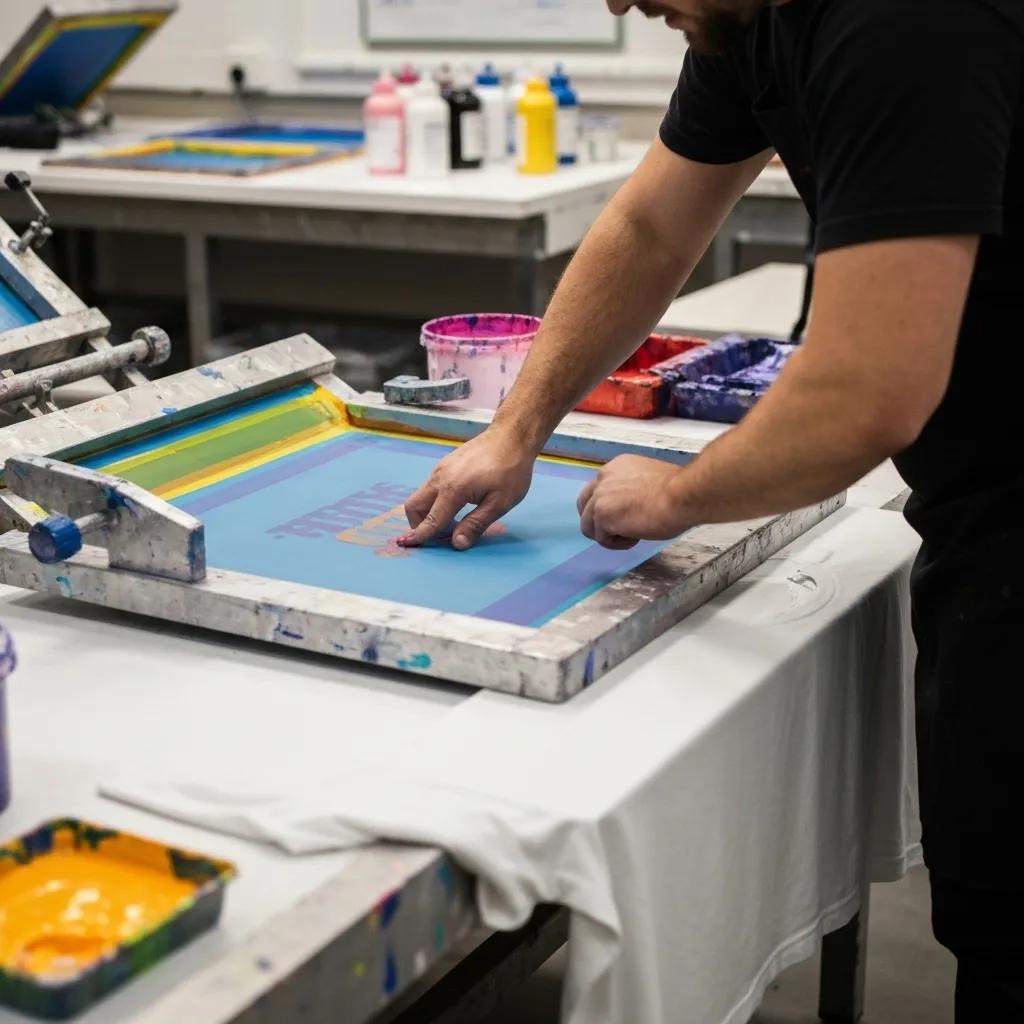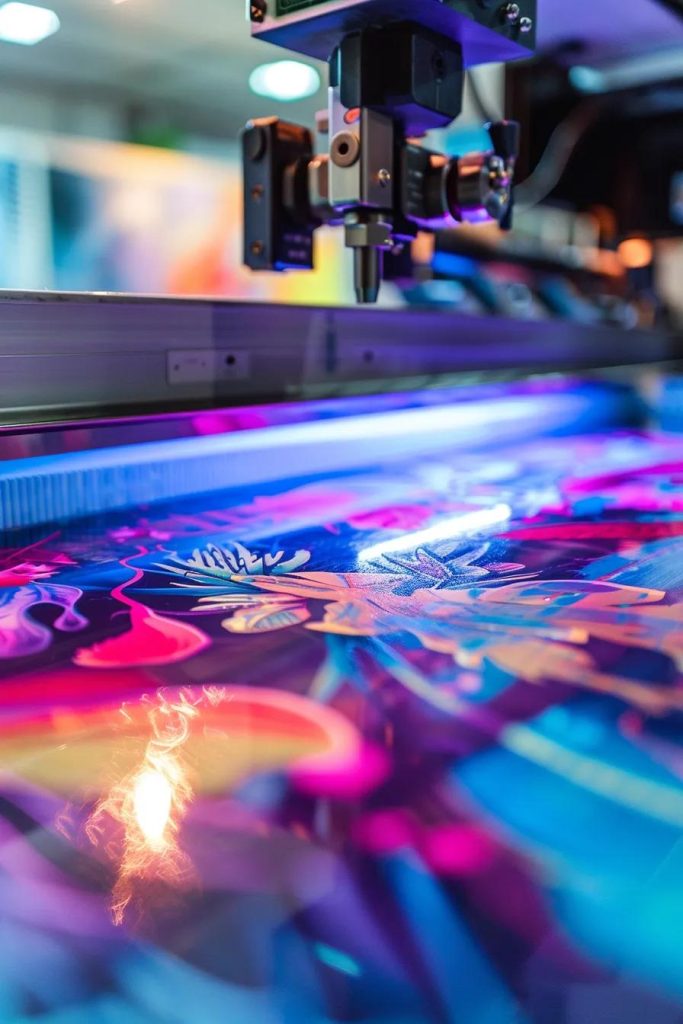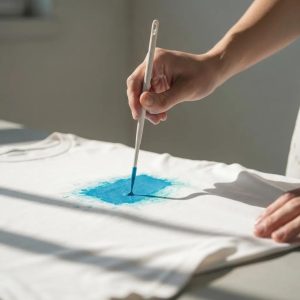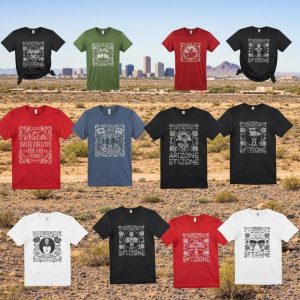Optimizing Custom Tee Printing for Arizona Businesses
Custom t shirt printing methods can make or break a local brand’s visibility and impact. Arizona Screen Printer specializes in guiding Phoenix and Tucson businesses through the choice between traditional screen printing and modern digital printing, ensuring every order reflects quality, cost-effectiveness, and on-brand vibrancy. This guide defines each process, compares cost, durability, detail, feel, and turnaround, and pinpoints exactly when each method serves Arizona companies best. You’ll learn:
- What screen printing is, how it works, and its pros and cons
- How digital printing (DTG vs DTF) unlocks small-run flexibility with photo-realistic detail
- A side-by-side comparison of cost, longevity, color, fabric compatibility, and hand feel
- Decision criteria tailored for Arizona businesses—order volume, design complexity, budget, and timelines
- Answers to top questions and how to partner with Arizona Screen Printer for flawless custom tees
What is Screen Printing? Process, Benefits, and Limitations

Screen printing is a stencil-based ink-transfer method where mesh screens selectively allow ink onto fabric, producing thick, durable prints that stand up to repeated wash and wear. By layering each color through separate screens, this technique delivers brilliant solids for logos and branding applications in large batches. For example, a nonprofit ordering 200 event shirts benefits from screen printing’s low per-unit cost and long-lasting vibrancy.
How Does Screen Printing Work for Custom Tees?
Screen printing for custom tees involves four key steps:
- A digital design is separated into individual color channels and burned onto mesh screens.
- Ink is placed at the top of each screen and squeegeed through open mesh areas onto the garment beneath.
- Each color layer is printed sequentially, creating crisp, vibrant imagery.
- Finished shirts pass through a conveyor dryer to cure inks and lock in durability.
These steps ensure that printed tees resist cracking and fading, making screen printing ideal for bulk orders and branded uniforms.
What Are the Advantages of Screen Printing?
- Outstanding durability that resists abrasion and frequent laundering
- Lower per-unit cost on large runs (100+ shirts) thanks to amortized setup fees
- Exceptional color opacity and consistency on dark and light fabrics
- Versatility across cotton, poly-cotton blends, and performance materials
By capitalizing on the strength of plastisol and water-based inks, businesses achieve long-term brand visibility on every garment.
What Are the Disadvantages of Screen Printing?
- Higher initial setup cost for screens and art separations
- Limited design complexity—fine gradients and photo-realistic details are difficult to reproduce
- Minimum order quantities to justify the investment in screen preparation
- Longer turnaround when multiple color layers require precise alignment
These factors make screen printing less practical for low-quantity or highly intricate projects.
Which Ink Types Are Used in Screen Printing?
| Ink Type | Base Material | Key Property |
|---|---|---|
| Plastisol Ink | PVC resin | Provides thick, durable coverage that bonds well to cotton and blends |
| Water-based Ink | Acrylic resin | Creates a softer feel and eco-friendly washout process with slightly lower opacity |
Screen printing’s robust ink layers and cost efficiency for high-volume orders naturally lead into a discussion of the complementary strengths of digital printing.
What is Digital Printing? Understanding DTG and DTF Methods

Digital printing applies inkjet-style heads or film transfers directly to garments from a digital file, enabling photo-realistic detail and quick turnaround. This method eliminates screen setup and excels at small-run orders and complex, multi-color artwork. A startup creating ten sample shirts can see art-to-shirt in under a day without screen fees.
How Do DTG and DTF Digital Printing Processes Differ?
| Printing Method | Ink Application | Ideal Use |
|---|---|---|
| DTG (Direct-to-Garment) | Inkjet nozzles spray water-based inks directly onto fabric fibers | Small-batch custom tees with fine detail and soft hand feel |
| DTF (Direct-to-Film) | Prints design on film then transfers via heat press | Versatile on blends and synthetics with strong adhesion |
What Are the Benefits of Digital Printing for Custom Tees?
- No minimum order requirement—ideal for prototype and on-demand runs
- Photo-realistic gradients, halftones, and intricate line work
- Lower upfront costs without screen or separation fees
- Soft, breathable prints that integrate into the garment surface
These advantages empower businesses to test new designs without financial risk.
What Are the Drawbacks of Digital Printing?
- Higher per-unit costs when scaling beyond 50–100 shirts
- Slightly reduced wash durability compared to plastisol-based screen prints
- Limited color opacity on dark fabrics without pretreatment layers
- Dependency on fabric composition—100% cotton yields the best DTG results
Understanding these factors helps local companies weigh quality against quantity and budget.
Which Fabrics Are Best Suited for Digital Printing?
- 100% ring-spun cotton for vibrant color and soft hand feel
- High-cotton blends (e.g., 60/40) with moderate clarity
- Specialized pretreatment fabrics designed for ink absorption
Choosing the right fabric ensures the crispest detail and longest print life under DTG and DTF processes.
Screen Printing vs Digital Printing: A Detailed Comparison Table
The following table contrasts key attributes of screen printing and digital printing using domain-specific headers:
| Feature | Screen Printing Performance | Digital Printing Performance |
|---|---|---|
| Setup Cost | High one-time screen preparation fee | Minimal—digital files replace physical screens |
| Cost per Unit | Low on large orders (100+ units) | Consistent but higher beyond small batches |
| Durability | Exceptional washfastness and crack resistance | Good, but slight fading over many washes |
| Color Vibrancy | Solid, opaque inks on light and dark fabrics | High detail, best on light garments |
| Design Detail | Limited to flat colors and simple gradients | Photo-realistic imagery with halftones |
| Fabric Compatibility | Wide range: cotton, blends, synthetics | Best on cotton and high-cotton blends |
| Hand Feel | Thicker ink layer for bold texture | Soft, integrated print surface |
| Turnaround Time | 5–10 business days for multi-color runs | 1–3 business days for small orders |
How Do Cost Factors Compare Between Screen Printing and Digital Printing?
Cost comparisons hinge on volume and setup:
- Screen printing amortizes high setup fees over bulk runs, dropping unit price below $5 on orders over 150 shirts.
- Digital printing maintains a flat rate of approximately $12–$18 per shirt regardless of batch size, making it cost-effective up to 50 units.
Cost Analysis of Printing Methods - English
The cost-effectiveness of screen printing is often realized in large-volume orders due to the amortization of setup fees, while digital printing maintains a consistent cost per unit, making it suitable for smaller quantities.
Jones, A., “Printing Industry Trends,” (2023)
This citation provides context for the cost comparisons between screen printing and digital printing, as discussed in the article.
Reviewing detailed pricing at Arizona Screen Printer’s screen printing price page clarifies break-even points.
Which Printing Method Offers Better Durability and Washability?
Screen printing delivers superior longevity through thick plastisol layers that resist cracking and fading. Digital prints bonded into fibers offer good durability but may show slight wear after 50+ wash cycles. Businesses requiring year-round uniforms often favor screen printing for its proven washfastness.
Durability of Screen Printing - English
Screen printing, using plastisol inks, is known for its exceptional washfastness and resistance to cracking and fading, making it suitable for long-term use. This durability is a key advantage for businesses needing apparel that can withstand frequent washing.
Smith, J., “Textile Printing Technologies,” (2022)
This research supports the article’s claim about the superior durability of screen printing compared to digital printing.
How Do Color Vibrancy and Design Detail Differ?
Screen printing produces bold, flat colors with absolute opacity, perfect for brand logos. Digital printing excels at reproducing photographs and complex gradients, rendering thousands of colors in a single pass but with slightly lower opacity on dark shirts. Selecting between vibrant solids and photo-realism guides the ideal method choice.
What Are the Differences in Feel and Fabric Compatibility?
Screen-printed ink sits atop the fabric, creating a thicker hand feel that showcases texture. Digital prints integrate into fibers, offering a smooth, soft touch. While screen printing adapts to virtually all fabric types, DTG and DTF require cotton-rich garments for optimal ink adhesion and vivid results.
When Should Arizona Businesses Choose Screen Printing?
Arizona companies should opt for screen printing when they require durability, color consistency, and economical per-unit pricing on bulk orders. From Mesa to Scottsdale, organizations leverage screen-printed tees to outfit teams, vendors, and promoters with lasting quality.
What Business Needs Make Screen Printing Ideal?
- Large-volume orders (100+ shirts) seeking low unit cost
- Simple logos or branding with up to 6 solid colors
- Long-term uniform and promotional apparel that withstand frequent wash
- High-contrast designs on dark or performance fabrics
How Does Screen Printing Benefit Local Arizona Companies?
Local brands rely on Arizona Screen Printer’s expertise and equipment to reduce lead times and shipping costs. A Phoenix brewery ordering 250 staff shirts saved 40% compared to out-of-state providers by choosing our streamlined screen printing process.
What Are Common Use Cases for Screen Printing in Arizona?
- Trade show giveaways and event staff uniforms
- School and nonprofit fundraising shirts
- Company employee polos and branded workwear
- Sports league jerseys and fan merchandise
When Is Digital Printing the Best Choice for Custom Tees?
Digital printing shines for low-volume runs, highly detailed artwork, and personalized orders that demand rapid turnaround. Startups, designers, and ecommerce sellers often turn to DTG or DTF when they need fewer than 50 shirts with complex graphics.
Which Scenarios Favor Digital Printing?
- Small orders (under 50 units) with mixed artwork
- Photo-quality images, full-color photographs, and intricate gradients
- Rapid prototyping and sample production
- Personalized names, numbers, or variable data on each shirt
How Does Digital Printing Support On-Demand and Personalized Orders?
Digital printing’s file-to-shirt workflow eliminates screens and simplifies customization. Retailers offering print-on-demand services can fulfill individual requests in hours, while marketing teams create variable-data tees for unique giveaways.
What Should Arizona Businesses Consider Before Choosing Digital Printing?
- Confirm fabric composition: 100% cotton yields the best vibrancy
- Anticipate slightly higher per-unit cost on large runs
- Plan for reduced wash durability compared to plastisol prints
- Factor pretreatment and drying times into turnaround estimates
Mindful planning ensures digital printing projects deliver expected quality on schedule.
What Key Factors Should Arizona Businesses Consider When Choosing a Printing Method?
Selecting between screen printing and digital printing depends on quantity, design complexity, budget, and turnaround needs. Weighing these criteria clarifies the optimal path to on-brand custom tees.
How Does Order Quantity Influence Printing Method Selection?
Higher volumes favor screen printing’s low per-unit cost, while digital printing is more economical for small runs. A 25-shirt order typically costs less with digital printing, whereas a 200-shirt order sees cost savings through screen printing economies of scale.
How Important Is Design Complexity and Color Detail?
Simple logos and limited color palettes align with screen printing; photo-realistic or gradient-heavy art demands digital printing’s precision. Matching method to artwork complexity prevents overpaying or sacrificing quality.
What Role Does Budget Play in Choosing Screen or Digital Printing?
Budget considerations include setup fees versus per-unit costs. Businesses with larger budgets for initial screens can achieve the lowest unit price on bulk screen orders, whereas modest budgets and flexible quantities benefit from digital printing’s minimal setup.
How Does Turnaround Time Affect Printing Method Choice?
Digital printing often delivers in 1–3 business days for small orders, while screen printing requires longer lead times (5–10 days) for multi-color runs. Urgent deadlines and last-minute events may lean toward digital printing solutions.
Frequently Asked Questions About Screen Printing and Digital Printing for Custom Tees
Is Screen Printing Better Than Digital Printing?
Neither method is universally better; it depends on your priorities. Screen printing excels at large-batch durability, vibrant solids, and cost-efficiency, while digital printing shines for small runs, intricate designs, and rapid turnaround.
What Is the Difference Between Screen Printing and Digital Printing?
Screen printing uses stenciled mesh screens and separate ink layers for each color, resulting in thicker, more durable prints after curing. Digital printing deposits ink directly onto fabric fibers from a digital file, enabling photo-quality detail without screen setup.
Which Printing Method Is More Durable for T-Shirts?
Screen printing is generally more durable, with plastisol inks resisting cracking and fading over hundreds of wash cycles. Digital prints bonded into fibers offer good longevity but can show wear sooner under heavy laundering.
Is Digital Printing Cheaper Than Screen Printing?
Digital printing is cheaper on small orders (typically under 50 units) because it avoids screen setup fees. Screen printing becomes more cost-effective at higher volumes by amortizing those initial costs across many shirts.
When Should You Use Screen Printing vs DTG?
Use screen printing for bulk orders, simple logos, and maximum durability. Choose DTG (direct-to-garment) printing for small batches, high-detail artwork, and quick sample runs where screen fees are prohibitive.
Why Partner with Arizona Screen Printer for Your Custom Tee Printing Needs?
Arizona Screen Printer combines local expertise, state-of-the-art equipment, and a commitment to quality that ensures every custom tee meets your branding goals. From expert art setup to final inspection, our process delivers reliable results for businesses across Phoenix, Mesa, and beyond.
What Makes Arizona Screen Printer the Trusted Local Expert?
With decades of combined experience and dedicated screening and digital printing lines, our team guarantees color accuracy, consistent registration, and on-time delivery. Local businesses trust our facility for responsive service and hands-on quality control.
How Does Arizona Screen Printer Support Large and Small Orders?
Our dual-capacity production allows us to handle 10-shirt digital jobs in under 48 hours and 1,000+-unit screen orders in a week. We tailor pricing and timelines to each project’s scope, ensuring cost transparency and on-budget results.
How Can Arizona Businesses Get Started with Custom Tee Printing?
Request a free quote online or call our Phoenix showroom. Share your design files and order details, and our specialists will recommend the best method—screen printing for bulk runs or digital printing for detailed, on-demand needs. We’ll review pricing, fabric options, and lead times so you can launch your branded apparel with confidence.
Ready to elevate your brand with high-quality custom tees? Contact Arizona Screen Printer today to explore screen printing, digital printing, and premium embroidery services.





